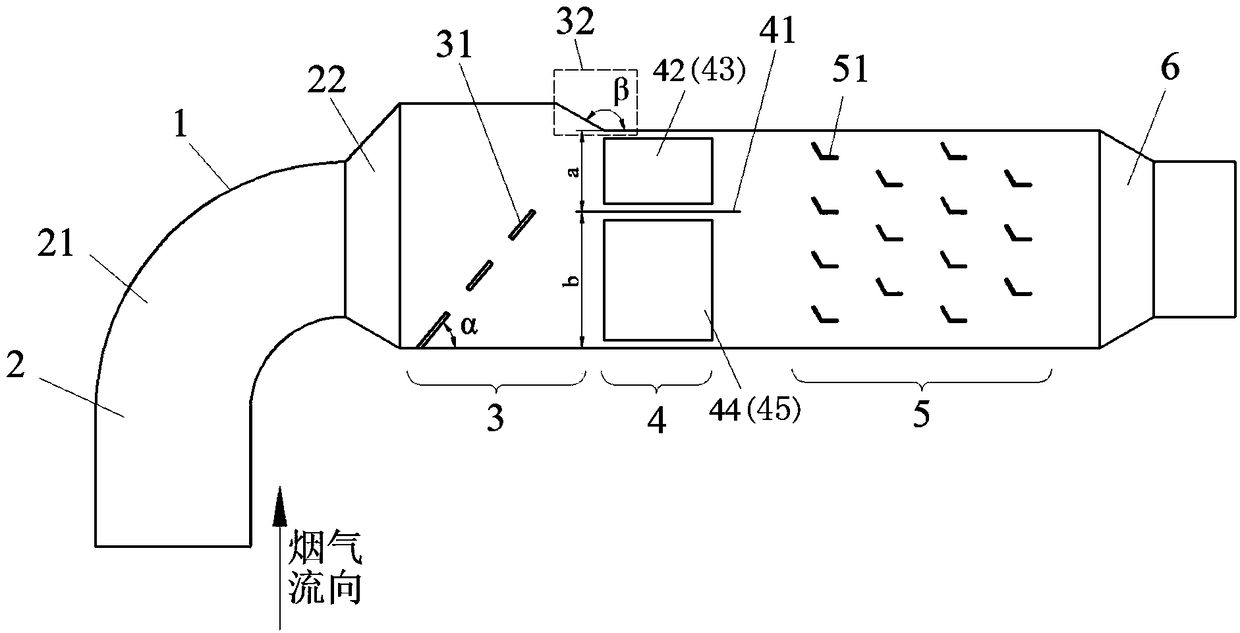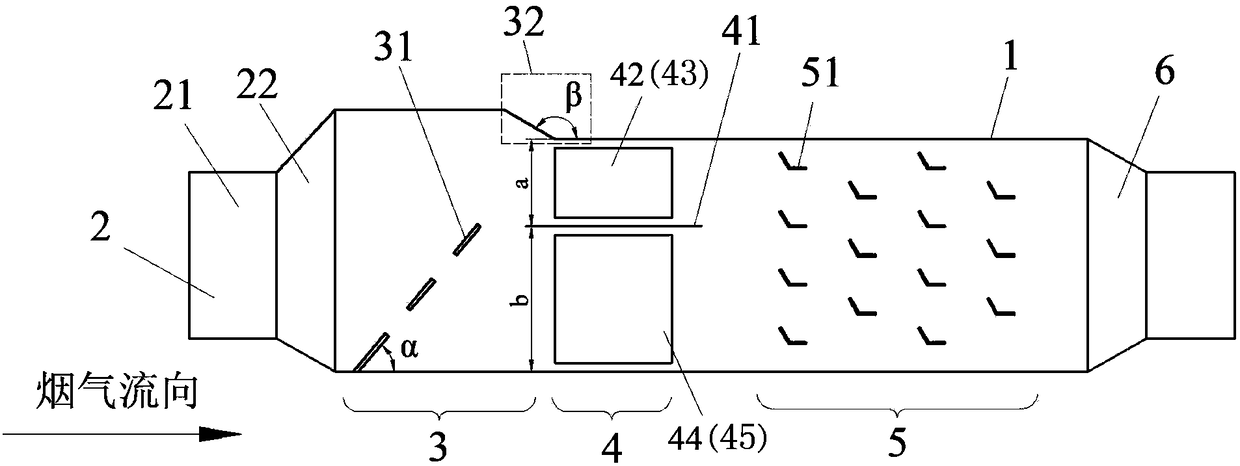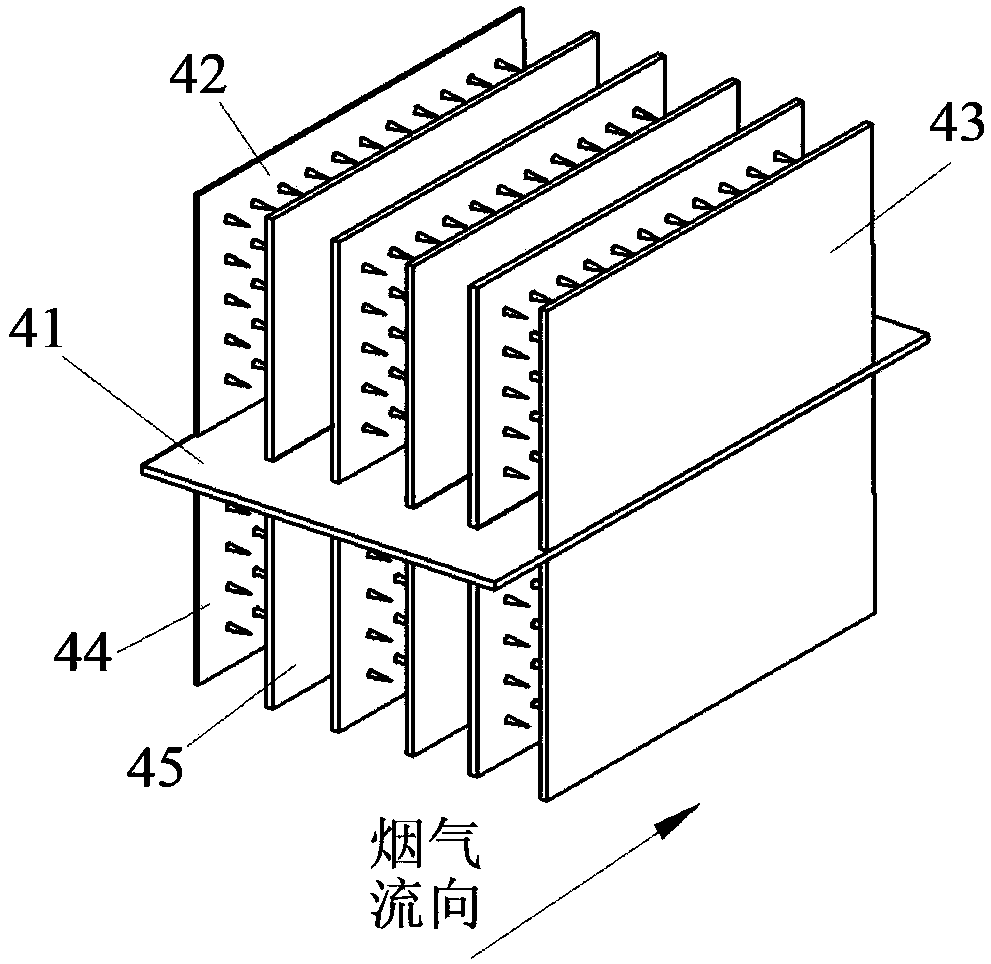Particle concentration electro-turbulent coagulation device for PM2.5 removal
A particle and density technology, applied in the field of particle density and electric turbulent coagulation devices, can solve the problems of difficult operation, large water consumption, low reliability, etc., and achieve good development prospects, good theoretical innovation, and convenient operation.
- Summary
- Abstract
- Description
- Claims
- Application Information
AI Technical Summary
Problems solved by technology
Method used
Image
Examples
Embodiment 1
[0039] like figure 1 As shown, the main structure of the device of the present invention includes a housing 1 preferably with a rectangular cross-section, an inlet diverging section 2 , a thick-thin separation section 3 , a heteropolar charging section 4 , a turbulent flow condensation section 5 and an outlet tapering section 6 . The inlet gradual expansion section 2 is composed of a constant cross-section flow channel 21 and a gradual expansion cross-section flow channel 22, wherein the constant cross-section flow channel 21 is an elbow structure, which can make the fine particles flow due to the centrifugal force and initially realize the separation of thick and thin, which is beneficial to Enhance the condensation effect of PM2.5. The thick-thin separation section 3 includes a louver baffle 31 composed of 4 plane baffles located on the same plane. The baffle and the flue gas flow form an inclination angle of α=45°, and a certain gap is left between adjacent baffles. The baf...
Embodiment 2
[0041] like figure 2 As shown, the inlet diverging section 2 of the device of the present invention is composed of a constant cross-section flow channel 21 and a diverging cross-section flow channel 22, wherein the constant cross-section flow channel 21 is a straight pipe structure. Particles in the flue gas enter the device through the constant cross-section flow channel 21, and the flow velocity is reduced through the gradually expanding cross-section flow channel. Further, after the flue gas particles pass through the louver 31 of the thick-thin separation section 3, two dust-laden airflows, thick and thin, are qualitatively formed, and the airflow with a higher particle concentration passes through the converging angle 32 to further increase the concentration of particles. The separation baffle 41 in the heteropolar charging section 4 quantitatively divides the dust-laden airflow into thick and thin dust-laden airflows, and most of the PM2.5 is located in the dust-laden a...
PUM
 Login to View More
Login to View More Abstract
Description
Claims
Application Information
 Login to View More
Login to View More - R&D
- Intellectual Property
- Life Sciences
- Materials
- Tech Scout
- Unparalleled Data Quality
- Higher Quality Content
- 60% Fewer Hallucinations
Browse by: Latest US Patents, China's latest patents, Technical Efficacy Thesaurus, Application Domain, Technology Topic, Popular Technical Reports.
© 2025 PatSnap. All rights reserved.Legal|Privacy policy|Modern Slavery Act Transparency Statement|Sitemap|About US| Contact US: help@patsnap.com



